Projects
The PhD theses of this Research Training Group depend on each other. Each of them requires a certain core expertise but also at least two neighboring expertises for its success.
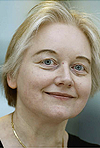
The Burghardt group brings expertise in the theoretical understanding of light-induced processes in complex molecular systems, including solute-solvent systems, biological systems (e.g., photoswitch-RNA/DNA and chromophore-protein complexes), and materials (e.g., semiconducting polymer materials used in organic photovoltaics). Within the RTG, the group will develop and employ theoretical tools that are specifically adapted to (i) novel spectroscopic wavelength-selective uncaging approaches and (ii) the study of uncaging controlled kinetics.
The PhD students of this project area will acquire in-depth knowledge of the theoretical and computational treatment of wavelength-selective photoexcitation, including the novel double-resonance VIPER approach as well as two-photon absorption techniques. (The latter aspect will involve a close collaboration with the Dreuw group, Heidelberg University.) Furthermore, the students will gain thorough understanding of the combination of electronic structure theory and kinetic approaches to obtain theoretical predictions of efficient uncaging platforms.
 Over the last ten years the Heckel group has gained extensive knowledge in the uncaging of DNA and RNA and recently also of small peptides. They have shown how to regulate aptamers, siRNAs and antimiRs with light as well as prepared light-activatable molecular beacons.
Over the last ten years the Heckel group has gained extensive knowledge in the uncaging of DNA and RNA and recently also of small peptides. They have shown how to regulate aptamers, siRNAs and antimiRs with light as well as prepared light-activatable molecular beacons.
The PhD students of this project area will obtain a deep knowledge in the synthesis and characterization of sophisticated photolabile groups and their introduction into biopolymers. They will receive an excellent training in the use of laser, LED and other light sources, synthesis, handling and characterization of DNA, RNA and peptides and in advanced microscopy techniques. They will further understand the principles of computational methods for the prediction of electronic structures as well as the methods used in (ultrafast) optical spectroscopy and super-resolution microscopy.
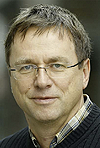 The Wachtveitl group is specialized in the development and application of time-resolved spectroscopic methods from femtoseconds to seconds optimized for dynamic studies of uncaging. Ultrafast (vibrational) spectroscopy is an especially suitable tool for the time-resolved investigation of reaction pathways and of small fragments generated in the photolysis reaction.
The Wachtveitl group is specialized in the development and application of time-resolved spectroscopic methods from femtoseconds to seconds optimized for dynamic studies of uncaging. Ultrafast (vibrational) spectroscopy is an especially suitable tool for the time-resolved investigation of reaction pathways and of small fragments generated in the photolysis reaction.
The PhD students of this project area will receive an excellent training in biomolecular spectroscopy both in the development of state of the art methodology and in the applications on biological systems. They will perform femtosecond time-resolved electronic and vibrational spectroscopic experiments and acquire profound knowledge of nonlinear optics and quantum chemistry. They will learn the handling of photolabile compounds, understand the principles of organic synthesis and participate in the design of optimized compounds.
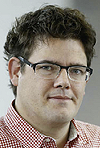
The expertise of the Bredenbeck group lies in femtosecond spectroscopy with a focus on mixed IR-UV/VIS multipulse experiments and two-dimensional IR spectroscopy. The group developed a flexible experimental platform that provides femtosecond pulses between 260 nm and 10.000 nm with arbitrary delays from the femtosecond to the millisecond range, which is ideally suited for the study of light controlled processes.
The PhD students in this project area will learn to develop and apply cutting edge femtosecond spectroscopy experiments. They will receive in depth training on femtosecond lasers, nonlinear optics and nonlinear spectroscopy as well as on advanced methods of data analysis and quantum chemistry. Through cooperation within CLiC they will become familiar with advanced methods of quantum dynamics and theoretical spectroscopy as well as with state of the art organic synthesis.
VIPER (VIbrationally Promoted Electronic Resonance) spectroscopy opens exciting possibilities in studying and controlling light-triggered processes: in a mixture of various molecular species with strongly overlapping or even virtually identical UV/VIS spectra, VIPER allows to select a certain species for electronic excitation. In this fashion even selection among different isotopologues for photochemistry has been demonstrated in the first term of CLiC. VIPER 2D-IR is a novel two-dimensional 5th order spectroscopy, which simultaneously addresses vibrational and electronic degrees of freedom and makes use of vibronic couplings. The students working on projects A4.3 and A4.4 will further develop and optimize this novel spectroscopy and apply it to new systems developed by their CLiC collaborators.
 The Dreuw group has an established track record in developing quantum chemical methods for the investigation of excited states of medium-sized to large organic molecules. Over the last years, in particular the algebraic diagrammatic construction scheme for the polarization propagator has been developed further and implemented efficiently into available software. Thereby, a research tool for the computational investigation of organic photochemistry has been established allowing not only for the computation of excitation energies and absorption spectra but moreover for a comprehensive study of photochemical processes like fluorescence, photo-initiated reactions, intersystem crossing, two-photon absorption spectra, excited-state absorption in the gas phase as well as in condensed media. For the latter, we have developed a suitable polarizable continuum model for the description of solvation, as well as a frozen-density embedding scheme for more static media like organic films or protein environments. These methods as well as all other available computational technology is employed in the Dreuw group to investigate challenging photochemical problems in the area of chemistry, biophysics and material science.
The Dreuw group has an established track record in developing quantum chemical methods for the investigation of excited states of medium-sized to large organic molecules. Over the last years, in particular the algebraic diagrammatic construction scheme for the polarization propagator has been developed further and implemented efficiently into available software. Thereby, a research tool for the computational investigation of organic photochemistry has been established allowing not only for the computation of excitation energies and absorption spectra but moreover for a comprehensive study of photochemical processes like fluorescence, photo-initiated reactions, intersystem crossing, two-photon absorption spectra, excited-state absorption in the gas phase as well as in condensed media. For the latter, we have developed a suitable polarizable continuum model for the description of solvation, as well as a frozen-density embedding scheme for more static media like organic films or protein environments. These methods as well as all other available computational technology is employed in the Dreuw group to investigate challenging photochemical problems in the area of chemistry, biophysics and material science.
The PhD students involved in the suggested projects will gain a deep knowledge in electronic structure theory as well as in the physical principles of photochemistry as well as spectroscopy. In addition, they will get familiar with most modern uncaging technologies devised by the experimental groups of the graduate college. The proposed projects will be closely interwoven with the projects of Wachtveitl, Heckel, Bredenbeck and Burghardt.
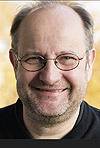
The group of Schwalbe will characterize protein and RNA folding utilizing caged compounds. In the first aim, new caged puromycin groups will be synthesized to study protein folding of nascent polypeptide chains when released from the ribosome. In a second aim, complex RNA folding reactions populating various intermediates will be studied. We will study the reactivity and conformational dynamics of a one-sequence-two-ribozymes construct developed in the Bartel group. In both projects, the application of light-triggered time-resolved NMR spectroscopy will be central.
 RNA molecules traverse rugged energy landscapes when folding into functional structures. As such, they can easily become trapped in misfolded conformations. Proteins with RNA chaperone or RNA helicase activity modulate an RNA’s free-energy landscape in order to accelerate RNA folding. Within CLiC the Fürtig group wants to decipher the mechanism of RNA helicases and determine how they promote RNA folding reactions.
RNA molecules traverse rugged energy landscapes when folding into functional structures. As such, they can easily become trapped in misfolded conformations. Proteins with RNA chaperone or RNA helicase activity modulate an RNA’s free-energy landscape in order to accelerate RNA folding. Within CLiC the Fürtig group wants to decipher the mechanism of RNA helicases and determine how they promote RNA folding reactions.
During the course of the thesis the PhD student will gain a deep knowledge of protein biochemistry and RNA biology. He/She will apply modern liquid state NMR technology to biomacromolecules and will be enabled to develop new NMR experiments when needed. The PhD student will learn to use a sophisticated coupled laser NMR system.
 The group of Clemens Glaubitz will use uncaging strategies for triggering enzymatic events of proteins within a membrane environment. The enzymatic reactions will be characterized by time-resolved solid-state NMR. The group has a long-standing expertise in biological solid-state NMR and in particular in membrane protein biophysics. The Glaubitz group has studied membrane-bound light-receptors, transport proteins, GPCRs and kinases. Their solid-state NMR methodology relies on high-field techniques and is complemented by dynamic nuclear polarisation, which is used in a close interplay with biochemical approaches. Recently, the group has started to explore the use of time-resolved solid-state NMR for elucidating kinetic processes within and at the membrane.
The group of Clemens Glaubitz will use uncaging strategies for triggering enzymatic events of proteins within a membrane environment. The enzymatic reactions will be characterized by time-resolved solid-state NMR. The group has a long-standing expertise in biological solid-state NMR and in particular in membrane protein biophysics. The Glaubitz group has studied membrane-bound light-receptors, transport proteins, GPCRs and kinases. Their solid-state NMR methodology relies on high-field techniques and is complemented by dynamic nuclear polarisation, which is used in a close interplay with biochemical approaches. Recently, the group has started to explore the use of time-resolved solid-state NMR for elucidating kinetic processes within and at the membrane.
The PhD student of this research area will be qualified in connected areas of expertise: He/She will be trained in solid-state NMR and in particular in fast detection techniques, in membrane protein biochemistry, in optical methods required to control light-triggered reactions and in preparing and handling of photo-labile compounds. The combination of these areas of expertise brings them into the unique position to develop novel approaches for observing kinetic events within biological membranes.
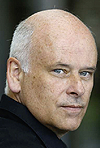
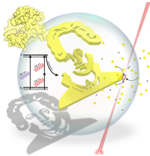
Within the first period, Alina Klein (née Kollmannsperger) established to introduce various light-controlled nanotools in living cells. This work also included protocols for the incorporation of unnatural amino acids into proteins of living cells for a generic purpose and studied natural photoreceptors in close collaboration with Prof. Dr. Kathrin Lang (TUM). We now aim to expand the possibilities to incorporate light-conditional amino acids and to build on the experiences in optogenetics. Novel photo-cages obtained by in collaboration with other CLiC partners (e.g. A2.5, A2.6) will enable us to design photo-conditional proteins, which are controlled in various dimensions by single or two-photon activation in living cells to study cellular biology in a generic way.
Another way to achieve light control about cellular processes in living cells is provided by the growing field of optogenetics. By protein engineering of key cellular players, light-controlled pathways in immunity and signal transduction will be established. Commonly, photoreceptors utilize a chromophore which is undergoing a reversible light-triggered reaction upon which the photoreceptors mode of action is being achieved. The chromophore determines the biophysical properties, like action kinetics or the action spectra. We therefore furthermore aim to make use of CLICs expertise in generating and functionalizing chromophors to study the distinct impact of novel chromophors in natural photoreceptors. This will help to obtain basic insights into the character of the light-triggered reactions in nature and strengthen the scientific community for optimizing the optogenetic toolbox
Suggested literature:
- "Live-cell protein labelling with nanometre precision by cell squeezing", A. Kollmannsperger, A. Sharei, A. Raulf, M. Heilemann, R. Langer, K.F. Jensen, R. Wieneke, R. Tampé Nature Commun. 2016, 7, 10372.
- "‘Traceless’ Tracing of Proteins – High-affinity trans-splicing directed by a minimal interaction pair", M. Braner, A. Kollmannsperger, R. Wieneke, R. Tampé, Chem Sci 2016, 7, 2646-2652.
- "Ultra-sensitive quantification of TAP-dependent antigen compartmentalization in scarce primary immune cell subsets", H. Fischbach, M. Döring, D. Nikles, E. Lehnert, C. Baldauf, U. Kalinke, R. Tampé, Nature Commun 2015, 6, 6199.
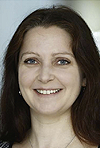
The expertise of the Morgner group is the development and application of mass spectrometry (MS) (www.LILBID.de). The non-covalent MS methods nano-electrospray (nESI) and Laser-Induced-Liquid-Bead-Ion-Desorption (LILBID) are especially suited to study biological samples like proteins, DNA and RNA. LILBID offers the possibility to study those samples time-resolved in physiological environment to gain information e.g. about the interactions of ligands to their binding partners or the oligomerization of proteins, especially membrane proteins.
The PhD student in this project will expand the LILBID technique to achieve time resolved (TR) measurements on fast sub-second time-scales. Therefore, the student will be trained in the use of mass spectrometers as well as handling and preparation of biological samples prior to MS analysis. He/she will learn to design the optimal geometry of instrumental parts by using the simulation software SIMION and the computer-aided design software AutoCAD which will be the base for manufacturing those components. Working closely with the PhD projects A2.3 and B1.2 he/she will run TR-LILBID-MS experiments and answer biological questions.
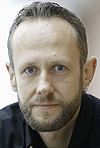
Membranes are key interaction hubs for various cellular events and many intracellular processes are dependent on the ability of cells to dynamically regulate membrane shape. The Wieneke group is interested in how biological membranes are shaped and organized and how the properties can influence the regulation of cell state and fate. To elaborate biological phenomena at membranes, we deploy a blend of organic chemistry, chemical biology, and cell biology approaches. We primarily focus on the design of small molecules (such as peptides, lipids) to target and modulate membrane interfaces as well as membrane proteins. Within CLiC, we develop and employ optochemical approaches, which are centered on small, light-addressable tags and moieties to gain spatiotemporal control of membrane-associated processes. To test our light-sensitive tools, we utilize a wide spectrum of model membrane in vitro systems and ultimately apply them in living cells to gain information on the orchestration of membrane-associated cellular events.
The PhD student of this project will obtain extensive knowledge in synthetic biochemistry as well as the tailored chemical synthesis of artificial biomolecules (amino acids, lipids, photo-activatable peptides/proteins). In addition, the PhD student will be educated in synthetic organic chemistry, (opto)chemical biology as well as techniques of biochemistry and molecular cell biology. He/she will be trained in advanced spectroscopy techniques as well as live-cell fluorescence microscopy to follow membrane perturbations online.

Over the last 25 years, the Schuman group has focused on the cell biological processes that govern protein availability at neuronal synapses. One key aspect concerns the synthesis of proteins. In neurons, new protein synthesis is required to remodel synapses and is also required for behavioral memories in living animals. Nevertheless, using available tools, it has been impossible to discern the “when” and “where” of protein synthesis dependence for in vitro and in vivo studies. All studies probing the role of protein synthesis have used chemical inhibitors, often common antibiotics, which work very rapidly but are unspecific and as such will block synthesis in every cell they come in contact with. This characteristic makes experiments where one desires a tight spatial (and temporal) inhibition of synthesis very challenging and in many cases impossible. In this project, the PhD student will develop fully genetically encodable protein synthesis inhibitor that can be combined with any common genetic targeting system. To achieve temporal control over synthesis shutdown the inhibitor will be combined with the inducible TetOn-System. The PhD student receive training in molecular biology, biochemistry, and imaging in a neurobiological context. Studies will be conducted in both cultured neurons and in vivo, in living animals.
